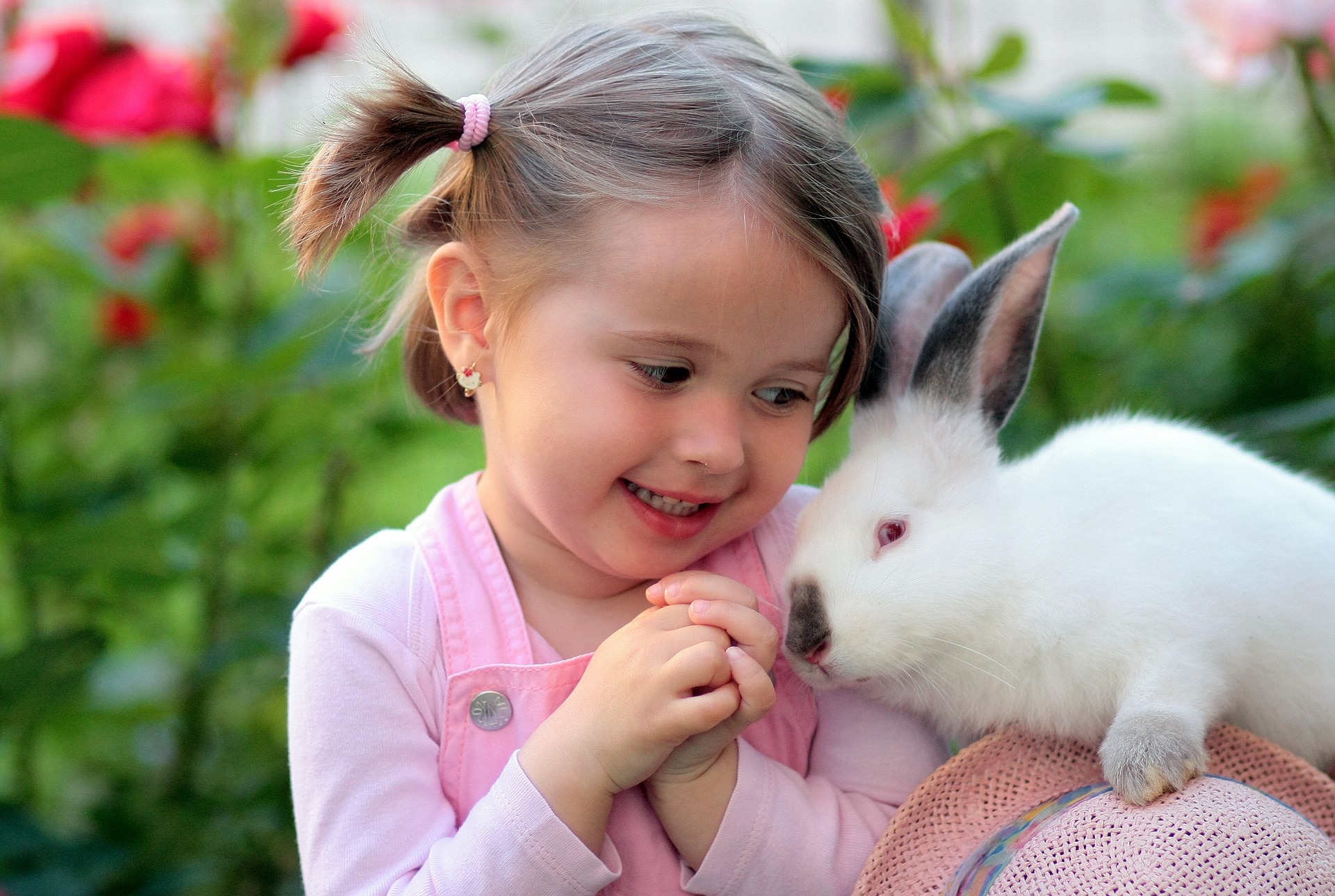When we have a pet home that keeps us company, it's also essential we learn how to take care of them. The key to this is to cultivate a healthy relationship with this pet and educate it, and this is vital for a good coexistence at home. Thus the bond with the animal will become stronger.
One of the pets that we usually have in our homes may seem difficult for us to understand and, therefore, educate them, is the rabbit. However, the rabbit is a brilliant animal. It can be well educated to live with other animals and us in a home. However, we must remember that just as the animal must adapt to certain aspects, we must adapt to it and know what limits are in their education.
How to Train my Rabbit - Tips
Before worrying about educating your rabbit, it is more important that you know its needs well and covers them to be healthy and have well-being. To do this, check that your rabbit has adequate nutrition by consulting its needs.
Read also: How to Know if my Rabbit is Pregnant
If he is healthy and well-fed, it will be easier for you to educate him because he will feel good, and you will have a happier coexistence. Both of you can benefit a lot from the relationship.
Once its needs are well covered, take note of these tips to train a rabbit:
- Always treat him with affection.
- Take it carefully and correctly, holding its back with one hand and placing the other in its armpits or on its trunk, so you will prevent it from falling from your arms or kicking to run and hurting itself against something because if it gets scared or startled will have a flight reaction. However, when you pick it up or touch it, you must also respect it, so if you see that it is stressed, leave it on the floor again carefully, do not harass it, and wait for it to be more receptive at another time.
- Show him that he can trust you and offer him calm.
- Always use positive reinforcement education.
- Avoid punishment or negative actions, such as hitting or touching, yelling, or chasing him (remember that he is prey in nature, so this behavior can easily scare him).
- Speak in a soft, calm tone, and don't make sudden movements.
- Offer them food beyond their staple food, such as a treat or a suitable treat, to get their attention and bond better. Bring the food close to him with your hand, wait for him to come, and if he approaches and is receptive, tries stroking his forehead while he begins to eat, and, little by little, he will allow himself to be touched and take more.
Next, we will learn more details about how to teach a rabbit in aspects such as relieving itself in a specific place or preventing it from chewing and gnawing on furniture, among other behaviors that in a house may seem problematic.

How to Train a Rabbit to Relieve Itself
Do not think that a rabbit's education to live in a house with people, and perhaps more animals, is like the education of a dog. Compared to dogs, rabbits learn less information of the kind that we intend to teach companion animals.
Therefore, teaching a rabbit to relieve itself in a place where it seems good to us can be easier or more difficult, depending on the rabbit and many other factors. Therefore, the most important thing will be to adapt to their needs: reactions and some customs.
For example, if your rabbit relieves himself outside of his cage, notice where he does and put a tray or corner shelf for rabbits with soil, sand, or absorbent pellets for his needs. Rabbits usually relieve themselves in the same place and usually in a corner. If he only relieves himself in the cage, then make sure to put a suitable corner not to take up a lot of space and ensure that the sand is always as clean as possible in all the trays you place at home.
If at another time he relieves himself outside of that place, say NO, without yelling, and place him on his tray, but you must do it when he is urinating or defecating so that he can understand if he does well, reward him with food right when he's done.

How to Train my Rabbit not to Bite
It may happen that your rabbit does not feel like being caressed or held, and it may scratch or bite you to tell you to leave it alone. You should not take this the wrong way, respect their wishes, and discover what they like or feel like at that moment, and you can touch it or take it at another time.
Another issue would be that whenever you want to get close, it tries to bite you, that is, if it has become aggressive or that it is from the beginning of being in your house. Therefore, the main reason is distrust and fear of the situation, so it will try to flee if it sees that it cannot, it will bite you, like any other scared or nervous animal.
However, there are more causes of aggressiveness in rabbits, so we recommend that you first discover their reasons by taking them to the vet to rule out health problems. Also, we recommend this other post Why my rabbit is aggressive.
If you already know why it bites, then you will have to help and educate your rabbit not to bite :
- Treat any health problems you have that could make you feel weak or have pain.
- Give him his space, do not intimidate or bother him.
- Always approach slowly and wait for him to get closer on his own.
- Offer him food that you know he likes a lot.
- Take it for a while every day and play with it free at home. This encourages bonding and will be less likely to bite you.
- Make sure they have all their needs well covered.
- Never take him roughly.
Regarding the latter, remember to let your rabbit out of the cage for at least one hour a day to exercise and expend accumulated energy. If it accumulates a lot and is always caged, it will not be surprising that it bites when trying to catch it. When you have to put him back in the cage, guide him to re-enter the door with gentle touches on his back or by giving him some food inside his cage that motivates him to enter.

How to Train my Rabbit not to Chew on Furniture or Dig
When we release the rabbit at home, either inside or outside, it is widespread to gnaw and chew on furniture and fabrics and dig in the ground. Since all of these are completely natural rabbits' behaviors, remember that they are rodents and animals that live in burrows. Therefore, although it sometimes bothers us, we must get used to it to some extent.
Also read: How to Feed a Nursing Dog
The most important thing is to remove any object that could be dangerous to your health, such as electrical cables, from your reach. Apart from this, educating a rabbit so that it does not chew on furniture or dig is impossible. At best, we can somewhat reduce this behavior and limit its area of free movement outside the cage to space enabled for it, in which it cannot gnaw dangerous objects or objects of value to us.
A good option is to use the rabbit parks, which offer you much more space than the cage, but still in a controlled location. We recommend this option when you are not watching or playing with it all the time and, instead, when you do, leave it totally loose, and you yourself avoid it from biting or digging in places where this worries you.
Also, you can talk to your veterinarian to see if they have a spray that discourages the animal from getting too close to a piece of furniture, or pheromones that calm it, something recommended in cases of very nervous animals or for occasions when we know they can get stressed—a lot.
Adapted and translated by The Cop Cart Staff
Sources: Uncomo







